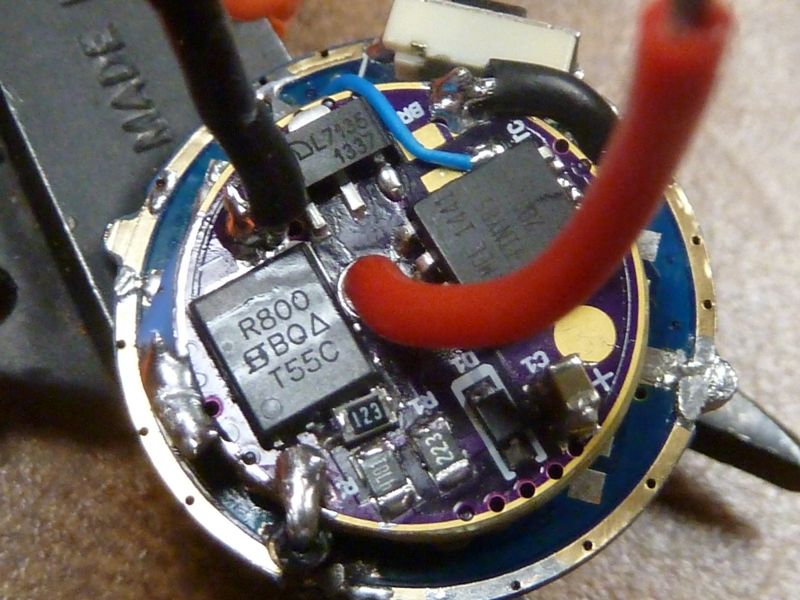Regarding the inductive ringing at the off edge of the PWM or strobe pulses, this is what we are dealing with:

Yellow trace is the voltage at the drain of the FET (so 0 V = FET full on, 0 V is at the second division from the bottom).
Blue trace is the voltage at pin 8 of the MCU, same scale.
This an A6 driver from Banggood driving one XM-L2, using a fresh 30Q cell.
We can see some boosting of the pin 8 voltage.
Note the FET drain peaks at > 6 V at switch-off.
Also note the frequency of the oscillation, around 10 MHz. We’re in HF radio frequency band.
Now lets shorten the wires between the emitter and the driver from 4” to 1”:

Frequency of the oscillation goes up, but peak goes down below 4 V - as can be expected with the lower inductance of the shorter wiring.
I know adding a gate resistor will tame that oscillation, but I did not want to scrap the driver (yet), so tried a drain-source snubber on the FET:

The snubber consists of a 0.1 uF capacitor in series with a 4.7 ohm resistor. Not calculated and for sure not optimum values, but a good improvement.
Something you might want to try Tom, if all else fails. For the test I used regular TH components with the leads cut short. One leg of the snubber capacitor on the black wire pad, one leg of the snubber resistor on the tab of the 7135 (better option would be the source pins of the FET).
The voltage at pin 8 of the MCU looked surprisingly good, all things considered. I would not use more than 0.1 uF between pins 4 and 8.
Emitter wire length also makes a big difference, so keep them short. This is also with the snubber, but with the 4” emitter wires:











